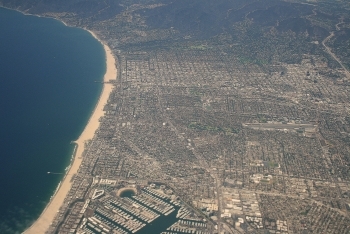Jul172014
Posted at 12:34 PM
Do you live on or near the coast? According to the latest population data, more than 39 percent of Americans lived in coastal shoreline counties and the number is growing. America’s coasts stretch along more than 95,000 miles. One downside to living along the coast is that climate change increasingmany natural hazards, such as erosion, harmful algal blooms, big storms, flooding, tsunamis, and sea level rise.
Investing in infrastructure has never been more important. In addition to the clear economic benefits of building a world-class infrastructure system, the third National Climate Assessment NOAA released earlier this year confirms that the impacts of climate change are already taking a toll on our communities. To help communities withstand impacts from more extreme weather and increased flooding, President Obama announced a series of actions to respond to the State, Local, and Tribal Leaders Task Force on Climate Preparedness and Resilience’s feedback to help state, local, and tribal leaders prepare their communities for the impacts of climate change by developing more resilient infrastructure and rebuilding existing infrastructure stronger and smarter.
President Obama’s focus remains on building on the progress America’s economy is making by helping businesses create jobs and expanding opportunity for all hardworking Americans. As part of those efforts, the President recently put forward a comprehensive plan to invest in America’s infrastructure in order to create jobs, provide certainty to states and communities, support American businesses, and grow our economy.
In 2011, 45 percent of our nation’s GDP – or $6.6 trillion – was generated in coastal and Great Lakes counties, supporting approximately 51 million jobs and $2.8 trillion in wages. Close to three million jobs directly depend on the resources of the oceans and Great Lakes. If the nation’s coastal watershed counties were an individual country, they would rank third in GDP globally behind the U.S. as a whole and China.It's no secret why so many of us choose to live in coastal regions. These are areas of great bounty and beauty.
As part of the President’s efforts to provide federal resources to support climate preparedness, NOAA announced on July 16, 2014 new program guidance for state coastal management programs. The new guidelines under Section 309 of the Coastal Zone Management Act will ensure greater consideration of how climate change may exacerbate challenges in the management of coastal areas. Through this effort, $1.5 million in competitive funding will be available to help states make improvements to their coastal management programs. The guidance will help state coastal managers better prepare for the impacts of climate change and improve the safety of their communities. Coastal Zone Management empowers state and local decision makers, while at the same time providing national context, guidance, and technical assistance.
The National Coastal Zone Management Program ensures that coastal communities are equipped to better address continued economic development of the coastal zone while accounting for natural resource management. The impact of this new guidance reaches far beyond the funding amount, as the guidance encourages improved planning in terms of coastal hazards. The National Coastal Zone Management Program has a long record of individual changes that add up to big results. Over one three-year period, for example, according to reports from communities, the program helped 400 communities make development decisions that protect community character and health; 570 coastal communities to reduce polluted runoff; and 140 coastal communities to redevelop ports and waterfronts.


